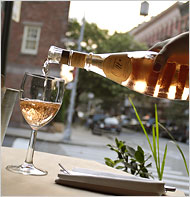 Surely my regular readers would agree I am not strictly a "purist" when it comes to wine innovation - whether it is using screwcaps or applying other modern winemaking techniques if/when it is warranted. My jaw dropped, however, when I read an article this week detailing the EU's desire to allow members to mix red and white wines to create rose (apologies for the lack of accent on the "e" throughout this post).
Rose is a tremendously delicious dry wine which we Americans (and others globally) have more or less just "discovered". Sales have been booming for the last several years. Finally the myth of rose tasting sweet like your Grand/Mother's white Zin(fandel) has been revealed! Meanwhile, consumers are going bonkers as they discover how many different styles there are; there is something for everyone and every dish.
Surely my regular readers would agree I am not strictly a "purist" when it comes to wine innovation - whether it is using screwcaps or applying other modern winemaking techniques if/when it is warranted. My jaw dropped, however, when I read an article this week detailing the EU's desire to allow members to mix red and white wines to create rose (apologies for the lack of accent on the "e" throughout this post).
Rose is a tremendously delicious dry wine which we Americans (and others globally) have more or less just "discovered". Sales have been booming for the last several years. Finally the myth of rose tasting sweet like your Grand/Mother's white Zin(fandel) has been revealed! Meanwhile, consumers are going bonkers as they discover how many different styles there are; there is something for everyone and every dish.
Provence, France is arguably the rose capital of the world. Whenever I think of sitting on the shores of the Mediterranean at a little cafe, I transport myself to Provence - and I am sipping rose. The folks there have worked particularly hard over the years to debunk the myth of cotton-candy sweet pink, plonk wines and created more awareness and appreciation for these delightful wines. In my mind at least, I think of it as a local effort to give these wines the international appreciation (or distinction?) of say, Champagne.
If the EU allows a broader definition of rose such that red and white wines are mixed rather than applying the traditional method of pressing the juice from red grapes, I fear the 'cheapening' of this lovely libation. Provencial rose (and other areas that use this traditional, sanctioned technique) will lose their prestige as the wines lose their vibrancy. And so today my question is:
For what real benefit is the EU doing this? Where is the market research that backs up this move?
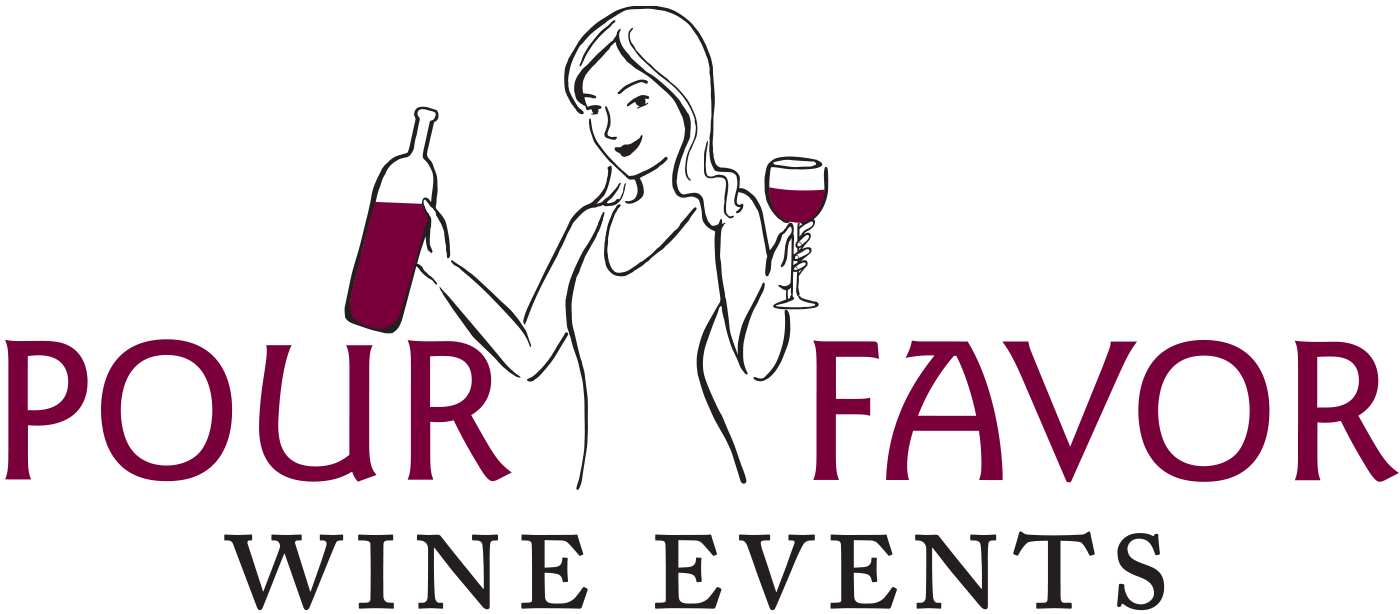

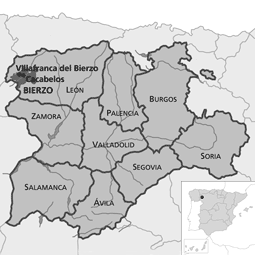 Were you nerdy about wine in 2006? If so, you probably read a few
Were you nerdy about wine in 2006? If so, you probably read a few 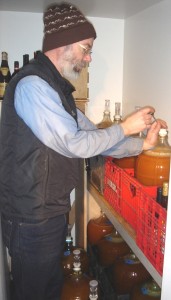 I'm always enamored with folks who truly enjoy their work - ever happy to be challenged while doing what they love. It's how I got into wine, to be honest. And it seems this is often the case in this line of work.
I'm always enamored with folks who truly enjoy their work - ever happy to be challenged while doing what they love. It's how I got into wine, to be honest. And it seems this is often the case in this line of work.
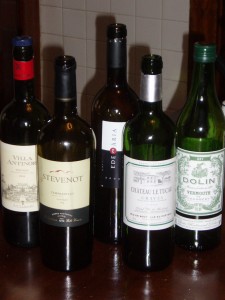 I hope you and yours had a wonderful time popping a cork or two last Saturday night for
I hope you and yours had a wonderful time popping a cork or two last Saturday night for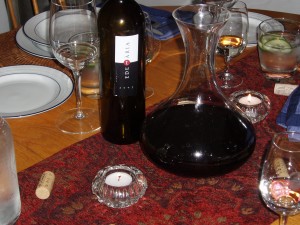 %) and Cabernet Sauvignon (25%). My inspiration for the paprika braised chicken was distinct from the wine I knew I would have on offer, so decanting was a priority to soften any rough edges and remove the sediment the wine was likely to throw. Since I know my friend prefers fruit-forward wines to uber-dry ones, I hoped this wine would deliver a nice silky mouthfeel, with both red and black fruits apparent. Finally, given the region's proximity to the Priorat, I hoped it would have a gentle herbaceousness and a touch of earthy leather. I was pleased to discover it delivered on all of the above!
%) and Cabernet Sauvignon (25%). My inspiration for the paprika braised chicken was distinct from the wine I knew I would have on offer, so decanting was a priority to soften any rough edges and remove the sediment the wine was likely to throw. Since I know my friend prefers fruit-forward wines to uber-dry ones, I hoped this wine would deliver a nice silky mouthfeel, with both red and black fruits apparent. Finally, given the region's proximity to the Priorat, I hoped it would have a gentle herbaceousness and a touch of earthy leather. I was pleased to discover it delivered on all of the above! Several years ago I found myself sitting in my doctor's office picking up a copy of "O" magazine. Not much of a magazine reader, I was just thumbing through it to pass the time. And then an article about a group of nine women, passionate about wine, caught my attention. They called their close-knit wine education group "
Several years ago I found myself sitting in my doctor's office picking up a copy of "O" magazine. Not much of a magazine reader, I was just thumbing through it to pass the time. And then an article about a group of nine women, passionate about wine, caught my attention. They called their close-knit wine education group "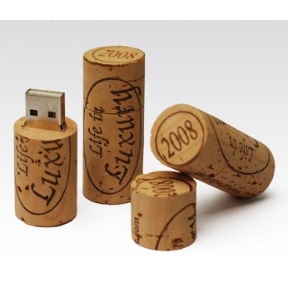 I can't help but feel excited and playful what with Open That Bottle Night on tap for tomorrow night and a few very cool new projects in the queue (more on those later...). So today I bring to you a sampling of lighthearted highlights from my wine reading this week.
Let's start with the most whimsical piece and go from there, shall we?
I can't help but feel excited and playful what with Open That Bottle Night on tap for tomorrow night and a few very cool new projects in the queue (more on those later...). So today I bring to you a sampling of lighthearted highlights from my wine reading this week.
Let's start with the most whimsical piece and go from there, shall we?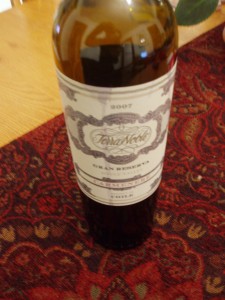 There's something great about finding something you thought had long been lost, or even just finding something you had long forgotten. The idea is the same. There is a magic to the rediscovery, almost heightening your original experience because of the novelty of the find.
This happened to me a couple of years ago when my mom had us go through our respective "boxes" of childhood stuff to consolidate our treasures. I remember finding a terrific array of goodies from my first "club", where I was deemed Secretary. I was - and still am - completely humored by the fact that my newsletter writing style and go-get-'m/take-no-prisoners/ra-ra approach as an 8 year old lived on in my daily correspondence with colleagues in 2006. Funny stuff.
There's something great about finding something you thought had long been lost, or even just finding something you had long forgotten. The idea is the same. There is a magic to the rediscovery, almost heightening your original experience because of the novelty of the find.
This happened to me a couple of years ago when my mom had us go through our respective "boxes" of childhood stuff to consolidate our treasures. I remember finding a terrific array of goodies from my first "club", where I was deemed Secretary. I was - and still am - completely humored by the fact that my newsletter writing style and go-get-'m/take-no-prisoners/ra-ra approach as an 8 year old lived on in my daily correspondence with colleagues in 2006. Funny stuff.

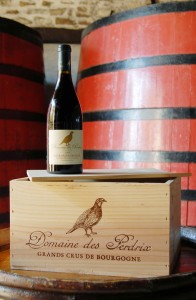 Like the growers champagne tasting I attended in December, the ones I make a real point to get to are not run of the mill, but more of a treat. HD for wine lovers, if you will. Last week I had the pleasure of attending two Burgundy 2007 tastings.
Like the growers champagne tasting I attended in December, the ones I make a real point to get to are not run of the mill, but more of a treat. HD for wine lovers, if you will. Last week I had the pleasure of attending two Burgundy 2007 tastings.